#astronomicalobservations
Explore tagged Tumblr posts
Text
The Scientific Reasons behind the Formation of Hindu Calendar Months
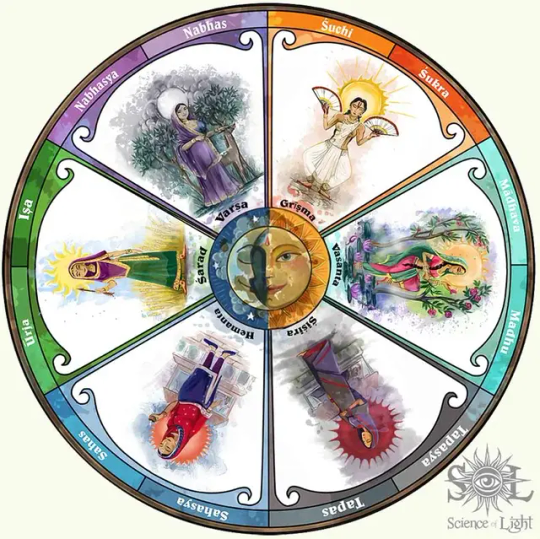
Hindu Calendar: Introduction
The Hindu calendar is a complex and intricate system that has been in use for thousands of years. It is based on the movement of the sun, the moon, and the stars and has its roots in ancient Hindu texts and scriptures. While the Hindu calendar is steeped in tradition and history, it is also based on scientific principles that have been observed and studied for centuries. In this article, we will explore the scientific reasons behind the formation of Hindu calendar months. The Hindu calendar is a lunar calendar, which means that it is based on the cycles of the moon. The lunar month is approximately 29.5 days long, which is shorter than the solar month of 30.44 days. In order to keep the lunar calendar in sync with the solar calendar, an additional month, known as Adhik Maas or Purushottam Maas, is added every few years. This helps to ensure that the Hindu calendar months remain in step with the seasons.
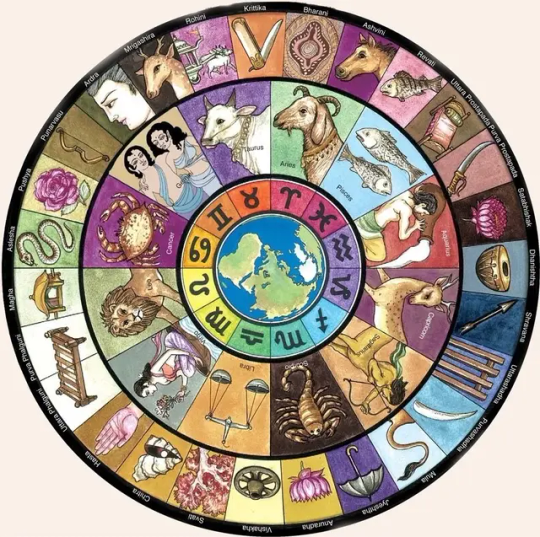
The Hindu calendar has twelve months, and each month is named after a particular constellation or Nakshatra. The twelve months are as follows: Chaitra (March – April) Vaisakha (April – May) Jyaistha (May – June) Ashadha (June – July) Shravana (July – August) Bhadrapada (August – September) Ashvina (September – October) Kartika (October – November) Margashirsha (November – December) Pausha (December – January) Magha (January – February) Phalguna (February – March) Each month is divided into two lunar fortnights, or Pakshas, of 15 days each. The first fortnight is known as the Shukla Paksha, or waxing phase of the moon, while the second fortnight is known as the Krishna Paksha, or waning phase of the moon. The Hindu calendar is based on the movement of the sun and the moon in relation to the earth. The sun's movement is used to determine the length of the solar year, while the moon's movement is used to determine the length of the lunar month. The lunar month is divided into 27 Nakshatras, which are small groups of stars that are used to mark the passage of time. The Nakshatras are believed to have a profound influence on human life and are used to determine auspicious dates and times for various Hindu rituals and ceremonies. Each Nakshatra is associated with a particular deity, and each deity is believed to have specific qualities and attributes. For example, the Nakshatra Rohini is associated with Lord Brahma, the creator of the universe, and is believed to be a particularly auspicious time for new beginnings. The formation of the Hindu calendar months is based on a combination of the movement of the sun and the moon, as well as the position of the Nakshatras. The lunar month begins on the day of the new moon, or Amavasya, and ends on the day of the full moon, or Poornima. The position of the moon in relation to the Nakshatras is used to determine the start and end dates of each month. The Hindu calendar months are also closely tied to the seasons, which are determined by the movement of the sun. The Hindu calendar is divided into two seasons, known as the Uttarayana and the Dakshinayana. The Uttarayana is the period of the year when the sun moves northward, and it begins on the winter solstice. The Dakshinayana is the period of the year when the sun moves southward, and it begins on the summer solstice.This division of the year into two seasons is believed to have been recognized by ancient Indian astronomers and is also referenced in Hindu texts such as the Mahabharata. The movement of the sun also plays a role in determining the length of each month in the Hindu calendar. The lunar month is approximately 29.5 days long, which means that there are roughly 12.37 lunar months in a solar year. To reconcile the lunar and solar calendars, the Hindu calendar inserts an extra month (known as an adhika masam) every few years. This helps to keep the lunar calendar aligned with the solar calendar and the seasons. In addition to these scientific reasons for the formation of the Hindu calendar, there are also spiritual and cultural reasons. Each month is associated with a particular deity and has specific rituals and ceremonies dedicated to that deity. For example, the month of Kartik (October/November) is dedicated to Lord Vishnu, and the festival of Diwali is celebrated during this month.
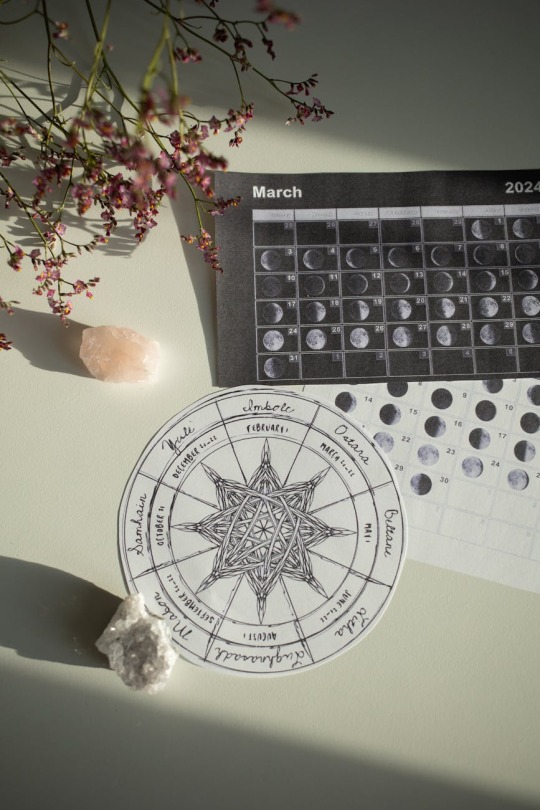
Photo by Monstera Production on Pexels.com The Uttarayana and Dakshinayana are divided into six-month periods each, and they correspond to different zodiac signs. The Uttarayana period, when the sun is moving northward, is considered to be more auspicious than the Dakshinayana period. During the Uttarayana period, the days are longer, and the weather is generally more pleasant. This period is also associated with the festival of Makar Sankranti, which marks the beginning of the harvest season. On the other hand, the Dakshinayana period is associated with a more challenging environment. The days are shorter, and the weather is hotter and more humid. This period is also associated with the festival of Guru Purnima, which is celebrated in honor of the guru or teacher. It is believed that during this period, the mind and body are more prone to illnesses and negative energies. In addition to the seasons and zodiac signs, the Hindu calendar months are also determined by the position of the moon. The lunar month in the Hindu calendar begins on the day after the full moon and ends on the day of the next full moon. This is known as a Purnimanta calendar system, as opposed to the Amanta calendar system used in other cultures, which begins the lunar month on the day after the new moon. The lunar month is further divided into two fortnights, known as the Shukla Paksha and the Krishna Paksha. The Shukla Paksha is the waxing phase of the moon, and it is considered to be more auspicious for new beginnings and growth. The Krishna Paksha is the waning phase of the moon, and it is associated with introspection and letting go of things. Each lunar month in the Hindu calendar is associated with a specific Nakshatra or constellation, which is believed to have an impact on human behavior and emotions. The Nakshatras are also used to determine auspicious dates and times for various Hindu rituals and ceremonies. In addition to these scientific reasons for the formation of the Hindu calendar, there are also spiritual and cultural reasons. Each month is associated with a particular deity and has specific rituals and ceremonies dedicated to that deity. For example, the month of Kartik (October/November) is dedicated to Lord Vishnu, and the festival of Diwali is celebrated during this month. Furthermore, the Hindu calendar is also used to determine auspicious dates and times for various ceremonies and events, such as weddings and housewarming ceremonies. Astrology and horoscopes are also an integral part of Hindu culture and are used to determine the most favorable dates and times for these events.
Conclusion:
In conclusion, the Hindu calendar is a complex and multifaceted system that is based on both scientific and cultural reasons. It reflects the ancient wisdom of Indian astronomers and the rich spiritual and cultural traditions of Hinduism. Understanding the formation and significance of the Hindu calendar can provide a deeper appreciation for the customs and traditions of Hindu culture. Read the full article
#AdikkaChannels#AdikkaChannelsblog#astronomicalobservations#astronomy#Dharma#equinox#Hinducalendar#HinduTraditions#Indianfestivals#Karma#lunarcycle#lunarmonth#Nakshatras#ScienceandHinduism#seasons#solarcycle#solstice#Vedictexts
0 notes
Text
First of Four Supermoons, the "Buck Moon," to Illuminate the Sky Tonight

Get ready for an extraordinary sight as the first of four supermoons graces the night sky tonight. Known as the "Buck Moon" during this time of the year, it will shine brighter and appear slightly larger than a typical full moon. The Buck Moon gets its name because it coincides with the period when male deer grow their antlers. Additionally, it is also called the "salmon moon" due to the timing of salmon runs. Some other names associated with this special moon include the "thunder," "hay," "mead," and "rose" moon. During a full moon, the sun, Earth, and moon align, allowing sunlight to directly illuminate the visible part of the moon that we see from Earth. However, a supermoon occurs because of the moon's elliptical orbit. As the moon follows its path, it reaches two crucial points: the apogee, where it is farthest from Earth, and the perigee, where it is closest to Earth. A supermoon happens when the moon is approximately 90 percent of the way toward its perigee position and is simultaneously in the full moon phase. This combination makes it appear larger and brighter in the night sky.
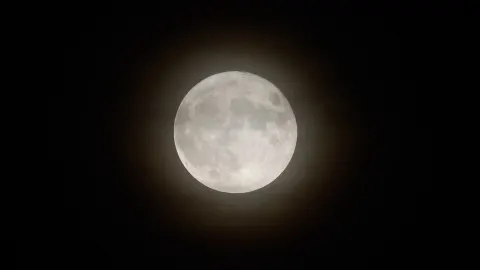
July's buck moon is one of four supermoons to rise in 2023. The full moon will appear to be about 7% larger, according to The Old Farmer's Almanac. The Buck Moon marks the first supermoon of 2023, and we can look forward to three more in the upcoming months. In August, we will witness the "sturgeon moon" on the 1st and the "blue moon" on the 30th. The "harvest moon" will grace the sky on September 29th. To catch a glimpse of this magnificent supermoon, find a spot where you have a clear view of the southeastern sky after sunset. However, visibility may depend on the local weather conditions in your area. At the very least, you can enjoy the full moon on Sunday night through Monday morning and again on Monday night through Tuesday morning. Make sure not to miss this awe-inspiring celestial event as the Buck Moon illuminates the night sky, providing a mesmerizing experience for stargazers and moon enthusiasts alike. Read the full article
#astronomicalevent#astronomicalobservation#astronomicalspectacle#astronomicalwonder#breakingnews#lunarattraction#lunarbrightness#lunarcycle#lunarenchantment#lunarfascination#lunarillumination#lunarmagic#lunarorbit#lunarphenomenon#lunarradiance#lunarspectacle#moonenthusiasts#moonphase#moonviewing#moonlight#moonrise#nasa#naturalbeauty#news#stargazing#worldnews
1 note
·
View note
Text

"Please join us at the Rec Hall parking area for an evening of #astronomicalobservations with visual telescopes, Electronically-Assisted scopes and monitors, and just looking up with our eyes!
Family-friendly, accessible, and guaranteed awesome! You do not need to bring a telescope – the BAS has all the gear!
Note: BAS events are free to all.
BackyardAstronomy #KeepLookingup #ScienceRules
#Keep Looking Up#Science Rules#Backyard Astronomy#Barnard Astronomical Society#Chattanooga Astronomy#To The Sky#Astronomical Observation#Amateur Astronomy#Backyard Telescopes#Encouraging Astronomy#Local Astronomy Observing
0 notes
Text
The Quest for Habitable Worlds Beyond Our Solar System
Planets-Like-Earth
This is an artist’s impression of innumerable Earth-like planets that have yet to be born over the next trillion years in the evolving universe. Credits: NASA, ESA, and G. Bacon (STScI) The search for planets like Earth, often referred to as “exoplanets,” has ignited a profound sense of wonder and curiosity among astronomers and the general public alike. In recent years, incredible advancements…
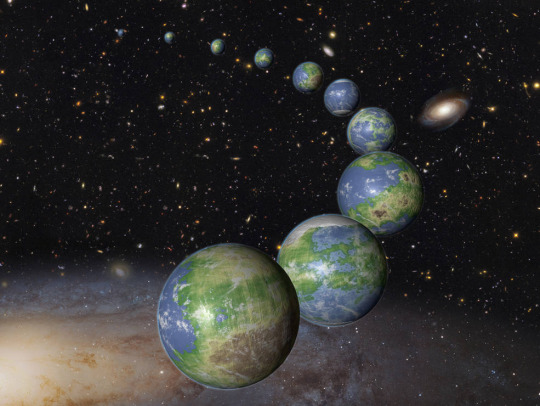
View On WordPress
#Astrobiology#AstronomicalCatalogs#AstronomicalDatabases#AstronomicalImaging#AstronomicalInstruments#AstronomicalObservations#AstronomicalPhenomena#AstronomicalSpectroscopy#AstronomicalSurveys#AstronomicalUnits#BlackHoles#CelestialBodies#Constellations#CosmicMicrowaveBackground#Cosmology#DarkEnergy#DarkMatter#Exoplanets#Galaxies#LightYears#MeteorShowers#Nebulae#Planets#SolarSystem#SpaceExploration#Stars#StellarEvolution#Supernovae#Telescopes
0 notes
Text

“お前は太陽から来たのか。月から来たのか。”
-極夜行 角幡 唯介
astronomical observation
1 note
·
View note
Photo
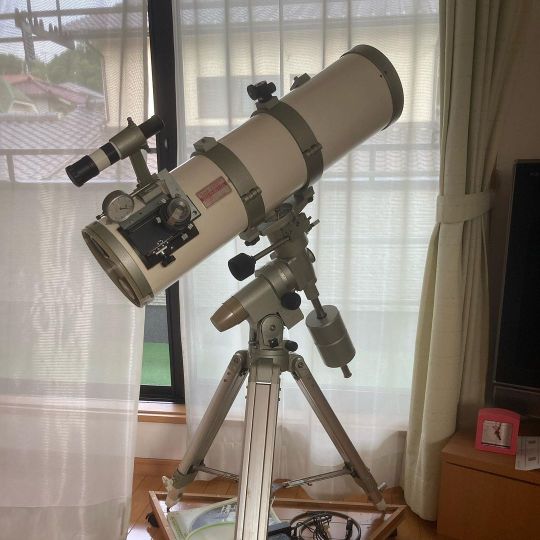
知り合いの人から #望遠鏡 いらない? って、バンプオフチキンのやつみたいに担ぐタイプのやつかと思ったらベテラン天体マニアが使うようなバズーカタイプを渡された。#天体観測 #telescope #Astronomicalobservation https://www.instagram.com/p/CQVa8-TM-0W/?utm_medium=tumblr
0 notes
Photo

はじめての天体観測 久しぶりに家族全員で★ さぁ、どこに行こうかなー? 星を見に行こう! と佐賀関の関崎海星館へ★ 昼間の太陽と金星を見て 楽しくなった 坊っちゃん 夜も見る! とのことで、 3時間あれやこれやと時間を紡いで さぁ!夜も! たくさんの星と月を見ることができました 父も母も天体大好き❤︎ 坊っちゃんも大好きでよかった❤︎ 灯台も清々しくて この前なんていう貝かなー? と思っていた貝も判明! 先週の楽しいプチ旅行でした♪ #関崎海星館 #天体観測 #astronomicalobservation #関崎灯台 #lighthouse #やつしろがい #shell #年長 #6歳 #6yearsoldboy #aged6 #oita #おんせん県おおいた #japan (関崎海星館) https://www.instagram.com/p/CHSdFCXrh62/?igshid=1g5th9c4xvmf8
#関崎海星館#天体観測#astronomicalobservation#関崎灯台#lighthouse#やつしろがい#shell#年長#6歳#6yearsoldboy#aged6#oita#おんせん県おおいた#japan
0 notes
Photo

ASTRONOMICAL OBSERVATION.
By Megumi Inoue.
http://sorahana.ciao.jp/
263 notes
·
View notes
Photo

07.09.19 • • #moon #moon_of_the_day #lookingup #inthesky #astronomical #astronomy #lunar #earthssatellite #themoon #firstquartermoon #waxinggibbous #sky #moonphases #moons #july #july9 #wisconsin #astronomicalobservation #northamerica https://www.instagram.com/p/BzuOZZhgIGt/?igshid=1161qmi0rznsf
#moon#moon_of_the_day#lookingup#inthesky#astronomical#astronomy#lunar#earthssatellite#themoon#firstquartermoon#waxinggibbous#sky#moonphases#moons#july#july9#wisconsin#astronomicalobservation#northamerica
0 notes
Photo
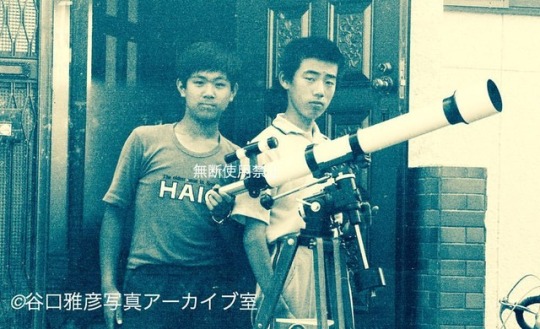
わたくし(左)14歳。 ふるさと北海道旭川市にて。 1981年7月31日に撮影された写真。この日、部分日食があり、友人と一緒に家の前で天体望遠鏡に一眼レフカメラを装着して世紀の天体ショウを観測撮影しました。 I (left) 14 years old. Hometown in Hokkaido Asahikawa city. Photograph taken on July 31, 1981. On this day, there was a partial eclipse, and I used a single-lens reflex camera mounted on the astronomical telescope in front of the house with a friend to observe and shoot an astronomical show of the century.
#北海道旭川市 #天体撮影 #天体観測 #写真家谷口雅彦 #谷口雅彦写真アーカイブ室 #1981年7月31日 #部分日食 #Asahikawa,Hokkaido #Astrophotography #Astronomicalobservation #PhotographerMasahikoTaniguchi #MasahikoTaniguchiphotoarchiveroom #July311981 #Partialsolareclipse (Asahikawa, Hokkaido) https://www.instagram.com/p/BwVroaJlQv2/?utm_source=ig_tumblr_share&igshid=t205okixxrl7
#北海道旭川市#天体撮影#天体観測#写真家谷口雅彦#谷口雅彦写真アーカイブ室#1981年7月31日#部分日食#asahikawa#astrophotography#astronomicalobservation#photographermasahikotaniguchi#masahikotaniguchiphotoarchive#july31#partialsolareclipse
0 notes
Photo
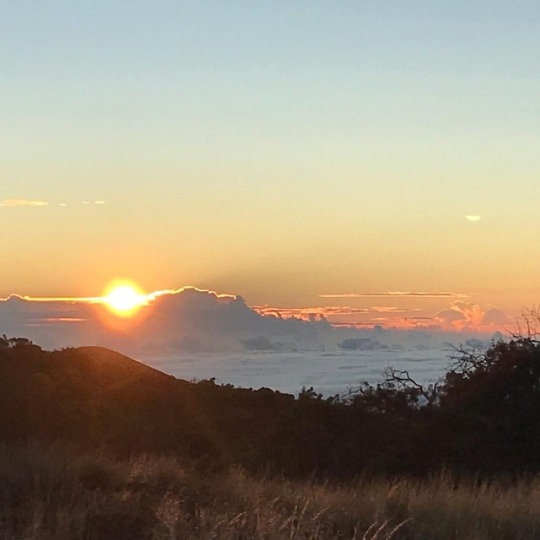
finally!2 真夜中出発で極寒の天体観測からのMaunakea sunrise. 手前に見える白い絨毯は雲海。 どこを向いても、違う惑星に来たみたいな景色。 It seems like it came on an another planet... #hawaii#bigisland#maunakea#sunrise#aloha#mahalo#sacred#planet#astronomicalobservation#beautiful#fantasy#trip#holiday https://www.instagram.com/p/Bp-M9N0BDbr/?utm_source=ig_tumblr_share&igshid=wbih1ogjldso
#hawaii#bigisland#maunakea#sunrise#aloha#mahalo#sacred#planet#astronomicalobservation#beautiful#fantasy#trip#holiday
0 notes
Photo
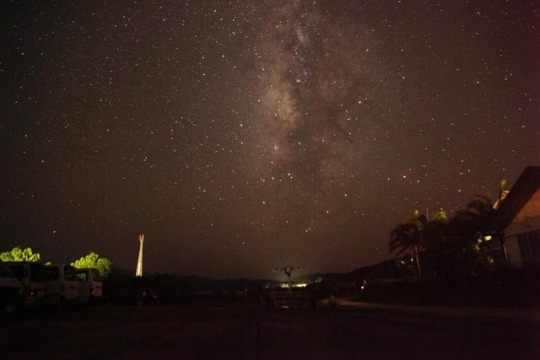
【 さぁ 始めようか 天体観測 】 何年ぶりだろう、こんな星空。 西表島で天の川。 BUMP OF CHICKEN の天体観測が脳内リピート。 #沖縄 #八重山 #石垣島 #西表島 #天体観測 #モンスーン #バンプ #bumpofchicken #天の川 #キヤノン #キャノン #旅 #旅行 #okinawa #yaeyama #ishigaki #iriomote #astronomicalobservation #astronomical #canon #5d #trip #travel (西表島モンスーン)
#astronomical#trip#ishigaki#モンスーン#キヤノン#西表島#沖縄#旅#石垣島#5d#バンプ#travel#astronomicalobservation#天の川#bumpofchicken#iriomote#yaeyama#八重山#キャノン#天体観測#okinawa#canon#旅行
0 notes
Photo

ちなみに今夜の月はこの通り。
現在の技術で人類が辿り着けるのは、僅か月と火星まで。
月は最短で4日ですが、火星の場合は約2年半。
但し、それだけの時間を閉ざされた空間の中で過ごすことになる
宇宙飛行士のメンタルが持たず、
かつ技術的にまだ復路の安全は確保できないと言われています。
それほど地球に近いから月面はこれほどハッキリと撮影でき、
地球から片道でも8年はかかるという土星の撮影が難しい理由も
大変わかりやすいものですが、
私たちが目にすることの出来る星の全ては
太陽を遥かにしのぐ等級をもつ恒星。
太陽も最後は膨張し、地球はおろか火星くらいまでは
悠に巻き込んで消滅すると言われているように
(太陽自身の重力���負けない限り、
みなさんが亡くなったずうっと後のことなのでご安心を)、
オリオン座のペテルギウスあたりは
既に周りの星諸共消滅していて、
存在していた時の光(640光年前の姿)を見ているだけかも知れないのです。
こういった事柄を鑑みると、
小さな惑星の中でミサイルを飛ばし合い、
環境を汚染し合ってる資金と技術力を、
もっと国同士が連携して深海調査や宇宙探索のために使えないものか、
とエンジニアリング及びテクノロジー好きとしてはつい思ってしまいます。
それに日本だけを念頭に、
少子高齢化が経済に及ぼす影響ばかり報道されていますが、
宇宙地球号として眺めたときには、
止まらない人口増加に纏わる様々なエネルギー問題や、
同じ生物同士でのテロや紛争。
やはりここでも先の宇宙飛行士の話との関連性を
考えてしまうのは私だけでしょうか?
星たちの世界の前に私たちなんて寿命の短い蝉のようなものなのに…。
今日は土星と月だけではなく、ダイヤモンドのように美しいベガや、
北極星(ポラリス)、イルカ座、アークトゥルスも
綺麗にみることが出来ましたので、
その美しさの前に、もっとこういう美しいものやことを共有できるはずが、
と少し悲しくなりました。
昨日は太陽フレアの関係で爆発的な動きを見せているオーロラの
素晴らしい写真たちを眺めながら眠りましたので、
今日は土星の姿を思い返しながら眠りにつきたいと思います。
みなさまもどうぞ良い週末を。
0 notes
Text
List of Apollo Moon Missions and Moonwalkers
Credit: NASA, ESA, CSA, and STScI List of Apollo Moon Missions and Moonwalkers: Apollo 11 (July 20, 1969): Neil Armstrong Edwin “Buzz” Aldrin Apollo 12 (November 14-24, 1969): Charles “Pete” Conrad Jr. Alan L. Bean Apollo 14 (February 5-9, 1971): Alan B. Shepard Jr. Edgar D. Mitchell Apollo 15 (July 26-August 7, 1971): David R. Scott James B. Irwin Apollo 16 (April 16-27,…

View On WordPress
#AstronomicalCatalogs#AstronomicalConstants.#AstronomicalDatabases#AstronomicalImaging#AstronomicalInstruments#AstronomicalObservations#AstronomicalPhenomena#AstronomicalSpectroscopy#AstronomicalSurveys#AstronomicalUnits#BlackHoles#CelestialBodies#CosmicMicrowaveBackground#DarkEnergy#DarkMatter#LightYears#MeteorShowers#SolarSystem#SpaceExploration#StellarEvolution#Astrobiology#Constellations#Cosmology#Exoplanets#Galaxies#moon landing#Nebulae#Planets#Stars#Supernovae
0 notes
Photo

【今日の一枚】 肉眼では観えなかったけど月の側に火星も写っていた今日の夕暮れ時 #今日の一枚 #新年 #正月 #冬 #1月 #月 #三日月 #火星 #金星 #天体観測 #冬の空 #夕暮れ #夕暮れ時 #日暮れ #日本 #newyear #winter #january #moon #crescentmoon #newmoon #mars #venus #astronomical #astronomicalobservation #wintersky #nightsky #twilight #dusk #nightfall #jp_view #jp_gallery #jp #jpn #japan #20170103
#jp_view#jpn#今日の一枚#月#astronomical#日暮れ#japan#火星#wintersky#winter#dusk#冬#金星#moon#三日月#newyear#mars#夕暮れ時#夕暮れ#nightsky#newmoon#日本#冬の空#天体観測#jp#nightfall#1月#astronomicalobservation#twilight#正月
4 notes
·
View notes
Photo
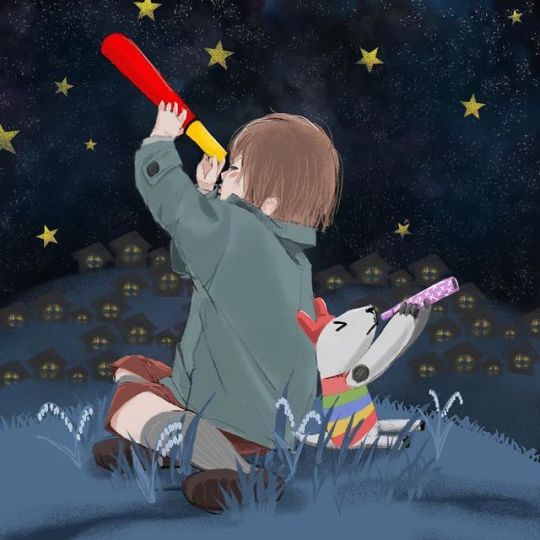
Astronomical obs #astronomicalobservations http://ift.tt/2y5Ei4f
0 notes